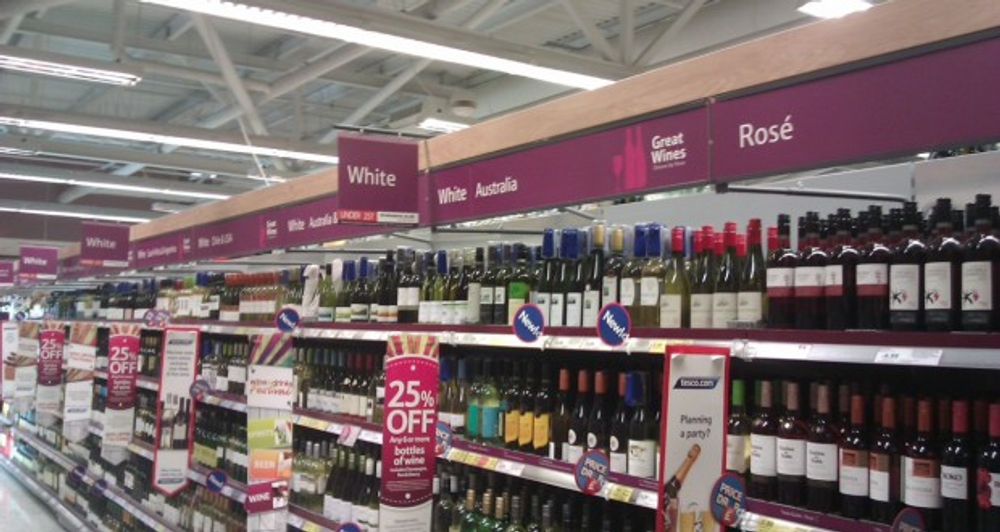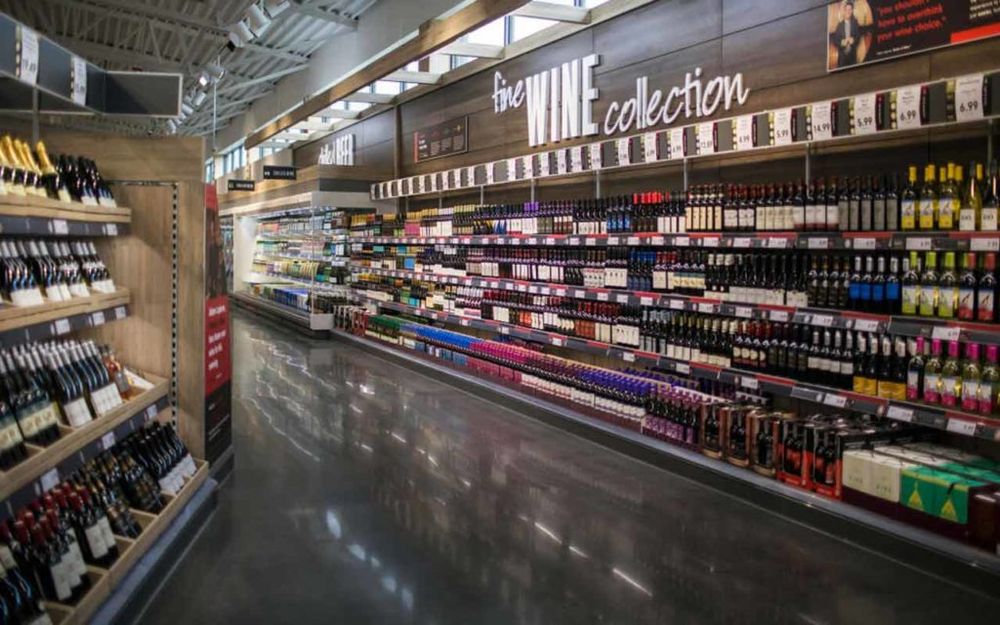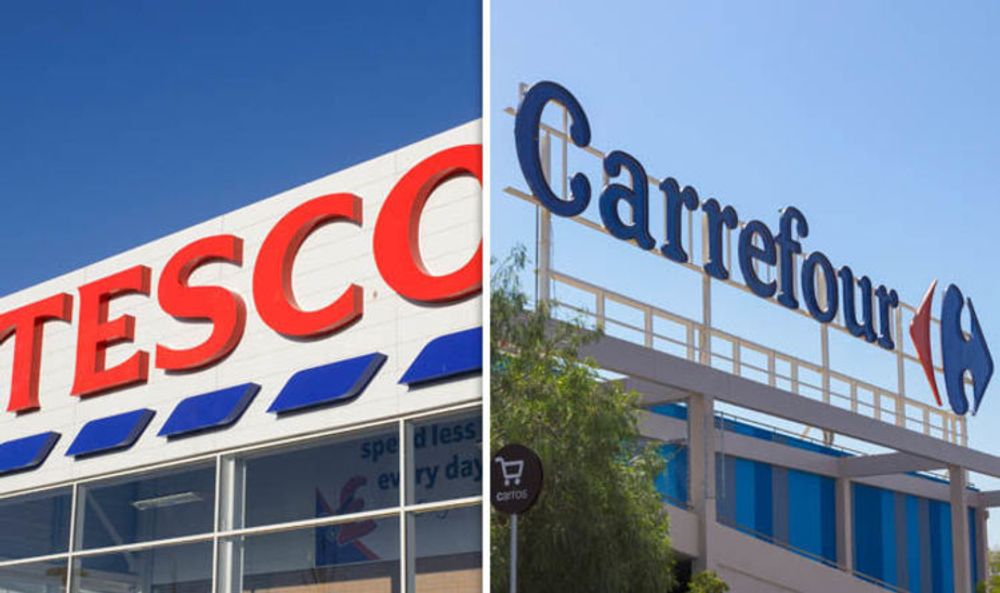When Sainsbury’s introduced its Camino del Angel lookalike wine alternative to Chilean category leader, Casillero del Diablo, it changed the conversation about private label. Retailers now often see their own brands as being more important than the ones they get from their suppliers. Richard Siddle picks his top 10 reasons why private label is changing the dynamics between producers, brand owners and the retailers and operators they want to sell their products.
1 Private label is a global phenomenon
Private label is fast gaining in popularity across the globe, and according to Nielsen data the market share for the sector increased last year in 12 out of 19 countries, and now stands at 30% or more in 17 countries. Germany is the biggest own label market in Europe, where it commandeers over 45% of the total market for the first time last year. Share also hit its highest level in six other countries – The Netherlands, Belgium, Sweden, Norway, Hungary and Turkey.
The gains came even in those countries where private label already enjoys a high level of household penetration such as the UK, Germany, Belgium and Portugal where share was over 40%. The largest markets for own label brands are found mainly in the more mature European retail markets. By comparison, the sector still has considerable potential for growth, especially in North America where penetration is still relatively low at around 18%.

America remains firmly attached to its big brands, and as a result private label currently only accounts for 18% of total sales, far lower than in most of Europe. But that is slowly changing as consumers come round to the benefits of own label
2 US is still wedded to big brands
Once we believed that where the US led, the UK and Europe inevitably followed. But when it comes to private label, this seems way off the mark, with American consumers seemingly far more wedded to their big brands than elsewhere in the world. It would appear that their attitudes have a long way to go, as evidenced by a survey, conducted by Nielsen, which discovered that only 58% of North Americans in 2016 said they believed that private labels are a good alternative to their favourite big brands, compared to 75% in the EU, and a global average of 65%. And only 62% of American consumers believed that private label usually represent extremely good value for money, compared to 76% of EU respondents and 73% of those in the Asia Pacific.
While American consumers can see the cost saving to be made in purchasing own label, with 71% agreeing they buy private label to save money, this is still less than in the EU, where a whopping 81% had switched to private label to cut costs. Interestingly, when asked whether they thought it was important to get the best price on a product, American consumers were amongst the respondents most likely to agree, with 78% concurring, compared to only 70% in the EU, though this was not as high as amongst Middle Eastern and African consumers of whom 85% said it was important to secure the best price. However, it would appear that Americans are slowly coming round to the idea of own label, with 76% agreeing that private label quality has improved, compared to a global average of 71% and 74% in the EU.

Tesco wine aisles, offering discerning consumers a choice of own label wines at attractive prices, alongside the big brands.
3 The UK – the world’s largest market for own-label
In the UK, one of the largest private label markets in the world, market share last year climbed to over 46%, and has been over 40% ever since Nielsen began compiling data for PLMA, the global fair for private label, back in 1997. And it is a market where grocery retailers such as Tesco and Sainsbury’s, which well understand their customers’ lifestyles have successfully used private label ranges to bolster their already strong store equity position. Their strategy has been to grow private label sales, particularly in fresh food, while reducing the range of packaged goods, typically by 15%, to help streamline inventories and improve availability. This strategy has boosted the major multiple retailers’ competitive position against the discounters, delivered strong volume growth for the retained brands and sparked faster private label growth across the store.
“Manufacturers can win by reinforcing the relevance of their brands to people’s lives, so effective marketing is key, not developing ranges just to have a higher price,” said Nielsen’s global client lead Robert Buckeldee. “By knowing the real consumer and shopper, manufacturers will develop better products.”

Lidl and Aldi have captured the imagination of their shoppers by offering good wines at great value.
4 Aldi and Lidl continue their aggressive expansion policies
The unstoppable march of the German discounters Aldi and Lidl has done much to stir up competition in the grocery market in recent years, and this is further intensifying as the cut-price chains follow aggressive expansion policies. And more discounters means more opportunity for private label.
Lidl entered the US market in 2017, with plans to open 150 stores within the year, while Aldi has announced plans to accelerate its growth in the US. The German discounters have also made their presence strongly felt in the UK market, where they have stolen market share from the “big four” supermarket chains – Sainsbury’s Tesco, Asda and Morrisons – who have seen their joint market share tumble from nearly three quarters (73%) in 2012 to 66% in 2016 (Homescan).
Aldi and Lidl manage to keep their prices low by limiting their skus to a slimline range of private label goods, compared to traditional supermarkets which tend to carry a variety of different brands of each single product. The German discounters also tend to operate with much smaller store formats and limit the level of their investment in stores, enabling them to offer attractive prices to their customers. Across Europe the total number of discounters now account for over a fifth – 22%- of FMCG sales, up from 17% ten years ago, the result of hypermarkets and supermarkets losing sales to the discounters, the majority of which has been due to shoppers shifting their spending away from brands to private label products.
5 Secondary labels coming to the fore
It’s not just private label that is stealing share from the big brands. Smaller, secondary brands are also winning market share from multinational brands in markets as diverse as the Netherlands, France, Italy, Portugal, the UK and Belgium, according to Nielsen. In Italy, for example, the top brand market share slid from 48% in 2014 to 43% in 2016, while over the same time scale other brands saw their share increase from 34% to 38% and private label inch up from 18% to 18%. A similar pattern can be observed in France, where big brands’ share dipped from 39% to 38%, while other brands share crept up from 34% to 36% and private label dropped from 27% to 26%. And in the UK, meanwhile, big brands’ share of the market dipped from 38% to 37% in the two years from 2014 to 2016, while other brands share moved up from 21% to 22% and private label held steady at 41%.
Good examples where secondary labels are muscling into big brand territory include organic products, tea, and natural product categories in personal care. In contrast, private label brands are losing share in Spain because top brands are still growing, boosted by increased promotional activity. On the plus side, smaller niche and private label brands often spearhead innovation, and are successful in communicating to consumers that there is no price or quality trade off in their products.
6 Market share versus price
Interestingly, nearly a third of the private label categories (32%) see their market share increase as they become more expensive, while 28% of categories see their market share decrease as their products become cheaper over time. Just over a fifth – 21% – of categories of private label goods saw their market share decline while they became more expensive, and 19% of categories gained market share while becoming cheaper.

Fine wine is becoming more attractive to consumers, who are increasingly drinking less, but better.
7 The only way is up
Premiumisation of private label is a clear trend in the market, according to Nielsen’s Marie Lalleman, EVP, strategic clients, despite the fact consumers are often aware of their spending, meaning they seek good value for a good price. This is particularly marked in food categories where health, wellness and food safety are driving consumer demand. “In markets where legislation guarantees production processes and food origin, private label products granted with production origin labels (such as organic labels or locally produced labels) are responding to consumer demand with affordable premium products and are capturing a good part of these segments’ growth,” she said. And it is consumers in the most developed markets who are most likely to splurge on premium products and most likely to do so when the product has a point of difference with its rivals. In many markets, private label goods are becoming a local alternative to premium, so as retailers move into this sector they are increasingly positioning private label much closer to multinational brands.

An alliance between Carrefour and Tesco has seen the two supermarket giants pool their purchasing power, while consolidation elsewhere in the sector has led to increased opportunity for own-label
8 Consolidation within grocery sector means more space for own label
One of the biggest catalysts for private label growth has been the ongoing consolidation and expansion of modern retail chains. Bigger store such as hypermarkets have more space to dedicate to private label, giving the category greater visibility and space alongside brands. In addition, smaller shops, which often have a focus on fresh and chilled sectors, can provide new and innovative private label products in food for now and convenience food. The formats experiencing the largest growth are the discounters, convenience stores and online grocery retailing.

Millennials are set to take over from the Baby Boomer generation as the demographic with the most disposable income in the coming years, making them an attractive proposition to FMCG manufacturers
9 Millennials are becoming the biggest FMCG consumers
Millennials who currently make up nearly a quarter (24%) of the global population, are expected to replace the Baby Boomer generation within the next decade as the demographic with the highest levels of disposable income. But compared to the older generation, millennials (largely defined as those born between the early 1980’s and mid 1990’s) are very receptive to trying out new products – and own-label is no exception. This social demographic want FMCG goods that do more, provide more convenience and offer better value for money, and therefore loyalty to big FMCG brands can no longer be taken for granted.
Millennials are also passionate about preserving the environment, and crave authenticity in the products they buy and the experiences they consume, and are hungry for products which promise to come from a sustainable source, or have an ethical image. Millennials are also prepared to heavily research products before buying them, and will happily buy own label products if they think they are as good as multinational brands. And even though many in this age group are only just kickstarting their careers, they are still willing to splash out on what matters to them. As the biggest consumers of FMCG goods in the coming years, the Millennials’ shopping habits will be key, and manufacturers should re focus their brand strategies to address what it is that this group want. Retailers and manufacturers who manage to achieve this will not only be able to cash in on the fast growing demographic but also enhance their own environmental sustainability ethical profiles.
10 Online shopping disrupting dominance of big brands

Online grocery shopping is already big in established European markets, and is predicted to take off in the US and China where it currently lags way behind.
The growth of online grocery shopping is acting as another big disrupter to established brands, and is set to soar in both the US and China. The US currently lags way behind Europe in grocery e-commerce, but now online activity is stepping up from the likes of Walmart. At the same time moves from online giants JD.com and Alibaba group will likely boost China’s online grocery market. By 2020 the share of online grocery spending could reach 20%, representing $100bn in annual consumer sales, according to Nielsen’s The Voice of food Retail report. “That is the equivalent of approximately 3,900 grocery stores. Expect a significant number of bricks and mortar categories, representing 40% of centre store volume to migrate to an online shopping experience,” said the report.
• Find out how to increase your private label sales at IBWSS London. The two day event looks to give supermarkets, retailers, restaurants, wineries, distilleries and other buyers a premier international platform to source bulk wine and spirits and meet private label suppliers. IBWSS London also comes with a 2-day action-packed conference whose mission is to provide bulk wine, bulk spirits and private label professionals with actionable insights on how to grow the bottom line. IBWSS London is organised by Beverage Trade Network.
Where and when
March 11-12, 2019. The Royal Horticultural Halls, 80 Vincent Square, London, SW1P 2PE
Exhibitors: To find out more about taking out exhibition space please contact the event organisers here.
It is free to attend the exhibition and you can register here.
Conference: If you want to attend the conference then click here to register.
































